- Home
- About
- Services
-
-
- Marketing and Identity
- Content Marketing
- Brand Identity
- Marketing Analytics
- Online Reputation Management
-
- Communications
- Public Relations Firm
- Crisis Management
-
- Case Studies
- Insights

From the beginning of civilization to the launch of the internet in 1983, physical real estate was the golden key for fruitful investments. Times have changed and the increasing value of online visibility has surpassed most real estate evaluations. Insane to think that a single webpage online has the potential to pull more revenue than owning a condo! Or is it… Today we explore the ever expanding potential and power of online visibility with 3 surefire strategies to supercharge your brands online visibility.
Craft a central digital space so magnetic, people want to stay, explore, and return.
Your website should be more than a brochure; it should be an interactive ecosystem where community, content, and conversion intersect.
Primary Software: Webflow + Jetboost – Build dynamic, user-driven web experiences with full creative control and speed.
Supporting Software: Surfer SEO – Optimize for visibility, not just design; ensure search intent matches structure, copy, and keyword density.
In 2025, shortform video isn’t optional — it’s your loudest visual handshake. Hook fast, hit hard, and leave residue in their mind.
Whether it’s storytelling, behind-the-scenes, or micro-tutorials, make your brand undeniably memorable.
Primary Software: DaVinci Resolve Studio – Craft cinematic, color-graded edits with elite control over pacing, tone, and storytelling depth.
Supporting Software: CapCut Pro – Quick, punchy, platform-native edits on the go; ideal for shortform virality and rapid iteration.
3. Leverage the Data-as-Authority Model for your Online Visibility
People trust brands that show they know. Turn your insights into powerful public dashboards, rankings, and value-driven tools.
Data isn’t just for analysis — it’s a storytelling weapon, here’s the top software to utilize. Scale your data!
Create a gated space that feels like a speakeasy for the curious. Make people feel lucky to be on the inside.
Premium content, early access, or even a private newsletter can amplify exclusivity and loyalty.
Online visibility isn’t just about exposure — it’s about creating gravitational pull. Each tool above, when deployed with intention, can create your own digital territory — one that compounds attention, trust, and income. This is the secret sauce for your online visibility!
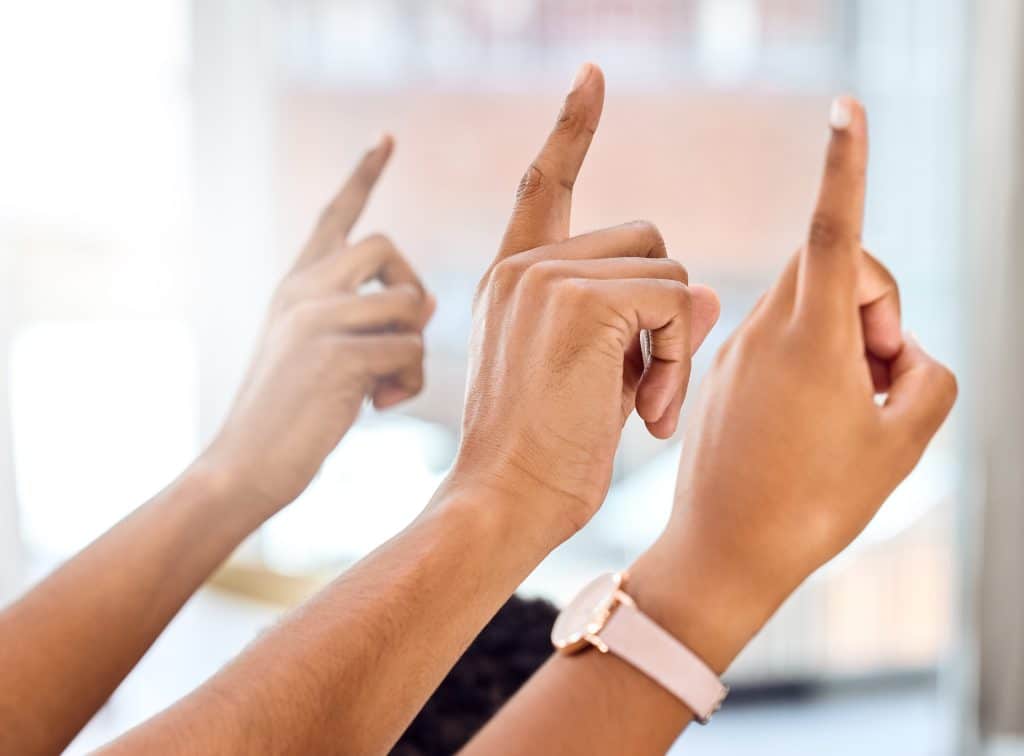
Just what is the rule of three in advertising?
There is a great quote by DaVinci that states “simplicity is the ultimate form of sophistication.” As humans we tend to overcomplicate systems and make things far more stressful than they need to be. When in reality the answer’s been baked into human nature since the very beginning.
Here’s the answer: three is the magic number.
Not one. Not two. And definitely not four. There’s something about threes—they just tend to click with us. Whether it’s storytelling, decision-making, or structuring your day, the brain handles three better than anything else. It’s optional without being overwhelming. It’s dimensional without being chaotic and it’s sticky. You remember three things. You act on three things. You shape your life with threes without even knowing it. This is the power of “The Rule of Three In Advertising”.
One is good for obsession—but obsession has a cost. It lacks contrast, feedback loops, and range. Two creates a binary—either/or—which often traps you in indecision or polarity, which isn’t always bad per say however… Four or more? Now you’re entering mental clutter territory.

First and foremost productivity and quality is at stake. When the brain is forced to pivot constantly it never enters a true flow state. The brain starts cutting corners. It defaults. It forgets. But three—three is grounded. It gives you context, contrast, and clarity. You can rank them. Triage them. Even weave a story through them. Three gives rhythm. One is a point and two is a line. Three is a shape! Speaking of shapes, let’s talk about how this can shape your brand with the The Rule of Three In Advertising.
Not one. Not two. And definitely not four. There’s something about threes—they just tend to click with us. Whether it’s storytelling, decision-making, or structuring your day, the brain handles three better than anything else. It’s optional without being overwhelming. It’s dimensional without being chaotic and it’s sticky. You remember three things. You act on three things. You shape your life with threes without even knowing it.
Threes don’t just work in habits and jokes. The brain runs best in threes—clarity, contrast, and stickiness. That’s why elite marketers use the hook, solution, ask formula: grab attention, offer value, then invite action. One is too narrow, two creates tension, and four just leads to noise. But three? Three lands. Whether structuring your day or your brand message, build in threes—it’s how we’re wired to think, decide, and move. This is the power of Rule of Three In Advertising.
Recent neuroscience backs the Rule of Three in Advertising—our brains are hardwired to process information in patterns, and three is the smallest number needed to establish a sequence. Studies in cognitive psychology show that people are more likely to remember concepts grouped in threes due to the way our working memory encodes information. This explains why so many iconic slogans, stories, and marketing frameworks succeed when built around triads. Threes don’t just work in habits and jokes. The brain runs best in threes—clarity, contrast, and stickiness. It’s a cognitive sweet spot that delivers maximum impact with minimal overload.
Want elite decision-making? Frame everything as three paths, three patterns or 3 options. Want creative momentum? Structure your day into three focus blocks: mind, body, mission. Want to present options like a master? Give three—always. Three challenges. Three films. Three ways forward. The mind locks onto it like clockwork. There’s power in the triad. Pyramid. Trinity. Rule of Thirds. Even the joke punchline uses it. That’s not a coincidence. It’s cognitive design.
The smartest move? Don’t fight the pattern—build inside of it. This is the power of the rule of three in advertising.
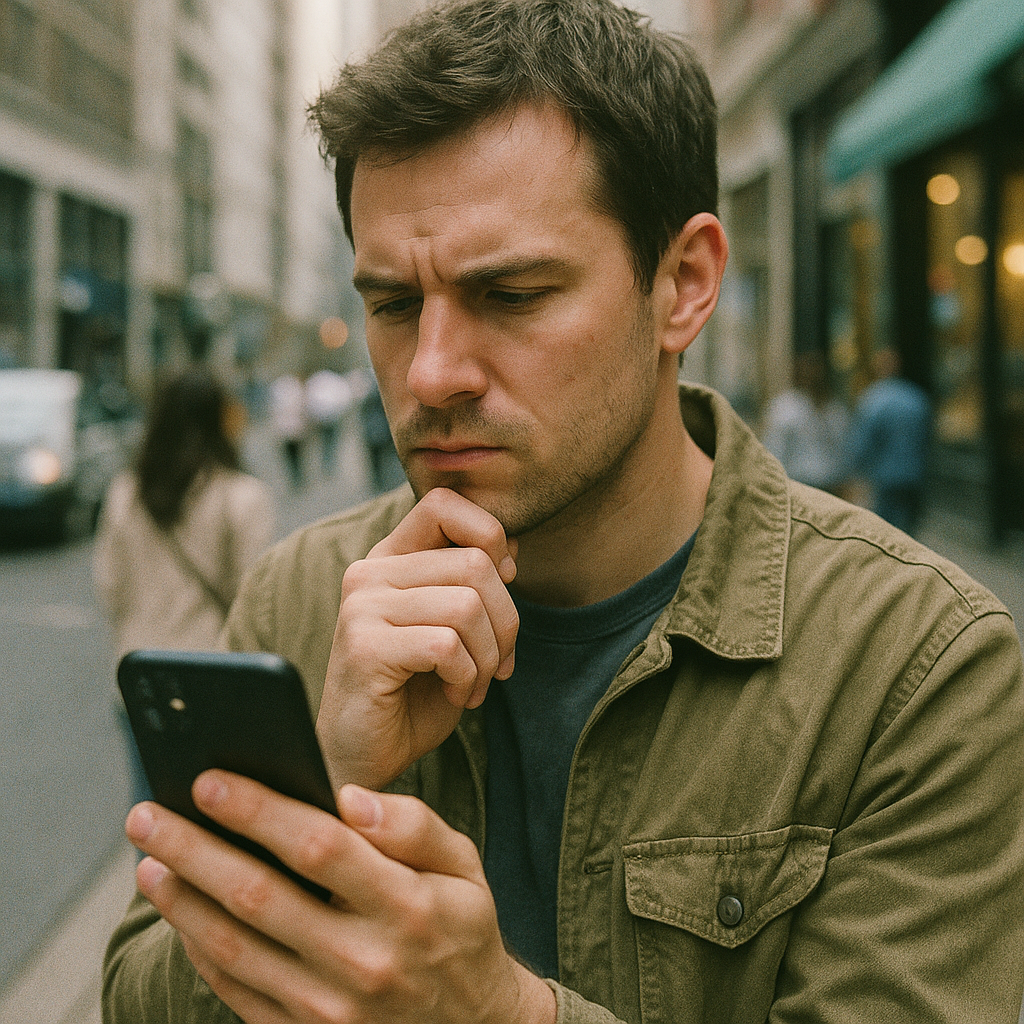
AI Avatars? Just what are we talking about here.
The rise of hyper-realistic AI avatars in digital marketing presents a novel challenge for consumers: how can you tell if the “influencer” promoting a product or message is a real person or a sophisticated digital creation, especially when that avatar might be pushing fake products or false narratives? This question, recently posed in a discussion among digital marketing professionals, highlights a growing concern in an era of increasingly life-like synthetic media.
While seasoned marketers understand the imperative of researching and verifying all claims, the average consumer may find themselves navigating an increasingly blurry line between authentic endorsement and AI-driven promotion. The core of the issue isn’t just about identifying an AI, but discerning the truthfulness of the message, regardless of the nature of the messenger.
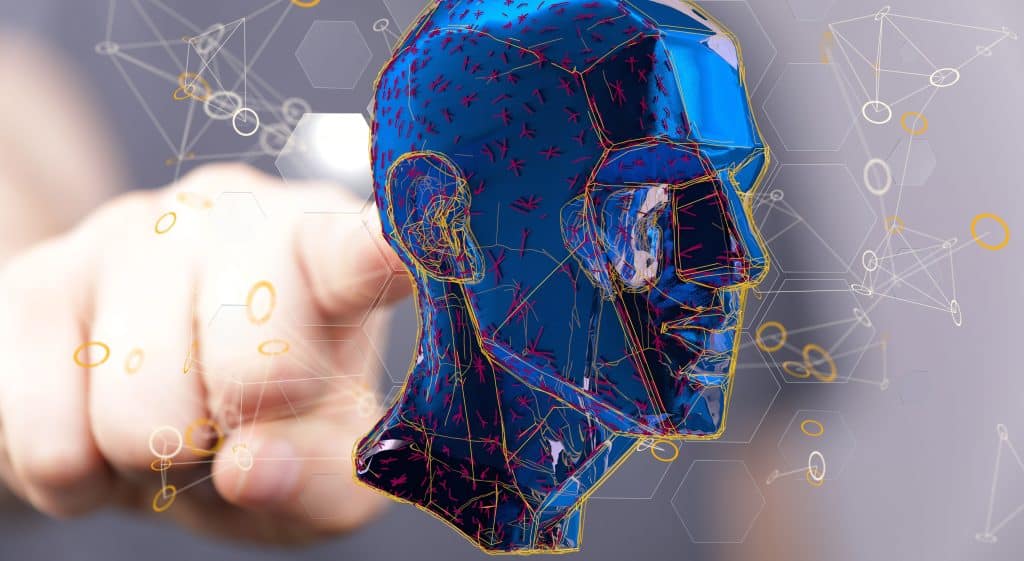
AI avatars offer significant advantages for marketing agencies such as ours. They provide a high degree of control over messaging and branding, can be available 24/7, and may reduce costs associated with human influencer collaborations. These digital personas can be customized to align perfectly with a brand’s identity and can engage with audiences through interactive and personalized experiences.
Marketers are already using them to A/B test hooks and narratives, optimizing campaigns before committing to higher-cost productions with human creators. The technology has evolved from simple chatbots to sophisticated entities capable of simulating human-like interactions, understanding emotions, and delivering tailored recommendations.
For the average user, distinguishing a well-developed AI avatar from a human influencer can be incredibly difficult. Especially if the avatar is only on screen for one or two seconds. Modern AI can generate highly realistic appearances and natural-sounding voices. This blurs the lines, making it easier for potentially deceptive practices to take root. The concern is amplified when these avatars are used to promote fake products or disseminate false information.
While there’s no single foolproof method to instantly identify a sophisticated AI avatar or guarantee the veracity of every online message, a combination of critical thinking, observational skills, and healthy skepticism can empower consumers.
Here are the top 4 actions users can take to navigate AI content:
The FTC has been increasingly active in addressing deceptive marketing practices, including those involving influencers and AI Avatars. New rules specifically target fake reviews and testimonials, including those generated by AI, and the agency can seek civil penalties for violations. This regulatory oversight is crucial.
For the digital marketing industry, the use of AI avatars brings ethical responsibilities. Transparency is key. Clearly disclosing the use of AI Avatars is not just about regulatory compliance; it’s about maintaining trust with consumers. Using AI avatars to knowingly promote fake products or spread disinformation is a severe breach of that trust and can have significant legal and reputational consequences.
The line between human and AI Avatars will likely continue to blur. For the layman, the best defense is a proactive and critical approach to all online content. It’s less about becoming an expert in AI detection and more about honing critical thinking skills and always questioning the authenticity of the message and the messenger. By doing their own research, looking for signs of genuine engagement, and prioritizing the verification of claims, consumers can better navigate this evolving digital landscape and make more informed decisions, regardless of who – or what – is doing the influencing.

Why focus on digital design?
Recently I watched 3 versions of King Kong, the OG from 1933, the campy Jeff Bridges one from 1976 and the epic Peter Jackson version. After finishing them all I sat with it for a while on which one I gravitated towards the most. Interestingly enough it was the 1976 version with the OG being a close second, now why this is interesting is because it arguably had the worst acting and screenplay (the actress literally says she was fatefully saved by the movie “Deep Throat”…) but it had this charm about it that was undeniable. It was the most human out of all three, and there was this artisanal texture to it that made it feel timeless. I wanted to unpack this not just in a subjective coffee-shop-debate-with-your-friend kind of way… I wanted to get into the science, the nitty gritty detail of tactile vs. digital design.
Before the cursor, there was the hand.
Before pixels, paint. Before automation, intention.
Alright I’m done with my 2001 a Space Odyssey opening, here’s where I’m going with this:
In a world where AI dreams in perfect gradients and frictionless forms, something essential is at risk of being forgotten. The lost item being the residue of the human spirit which is left behind in every beautiful imperfection. This is not a rejection of digital tools—but a reckoning with their limits. The way we shape a medium shapes us in return and our human experience. Art and craftsmanship isn’t relegated to the cesspool of content; it’s a mirror of ourselves, the shards cutting into our flesh as we pour ourselves into our work. Digital design in its own right offers us the ability to scale our imagination , however there is a time and place to leverage it.
This is a meditation on that divide.

It comes to no surprise that digital design is very similar to tactile design. The big difference in digital design is the digital arbitrator. The veil of ones and zeros between us.
While digital design offers precision it inherently lacks texture. So one may ponder, how can I achieve texture in a digital design environment. You have to think of digital design in layers, to truly understand it’s belonging.
Let’s start this grand discussion by addressing the image above.
“Ai vs a real photo.”
The image was generated by AI relatively easily but the idea came completely from me. Its purpose was to show the dichotomy of our shift from a rugged art-form to precision. There was no image like this in stock footage obviously and I wasn’t going to sit down and create this myself for our brand agencies article. Branding is a fast paced world that doesn’t wait for anyone and we have to call a spade a spade moving forward. However, this is a great use case of digital design when quickly generated content with intentionality can amplify a deliverable. So when do artisanal touchpoints come into play and what are they?
Simply put, artisanal touchpoints are the steps in the creative process and our decision to either handle them with digital precision and speed or artisan nuance and intentionality. They service both digital design realms as well as physical design. I believe the decision isn’t so black and white ,at the very least it’s definitely not one size fits all. So when do we go digital and when the hell do we commit to tactile?
Even in digital design the brain craves the imperfect. The craving for the perfect taps into something deep, something primal. It’s hardwired into our very being by our culture and biology. From architecture to facial attractiveness the brain perceives structural hierarchy and depth with certain reverence.
Symmetry provides a balance our neurology desires, and is often associated with health and genetic fitness. Our brains are wired to favor symmetrical faces, balanced proportions, and clean lines. This is not only in humans but also architecture and compositional mediums like photography, painting and graphic design. Symmetry often provides a pleasing guideline for artists, architects, and designers to follow to garner eye pleasing results.
The popular belief is that beauty is only married to symmetry. This is actually a logical fallacy; symmetry can be aesthetically pleasing in many contexts, but it’s not a universal measure of beauty. Our eye craves imperfection in subtle asymmetries and textures that suggest authenticity and emotional depth. It’s like a thread from our hearts to our hands and we are connected through neural empathy.
Imperfections trigger microsaccades—tiny, involuntary eye movements that increase attention and deepen visual scanning.
Neuroaesthetics reveals that tactile mediums—especially when experienced by fellow artists—activate the somatosensory mirror neuron system, forging a subtle, empathetic bond with the creator’s hand. This embodied resonance deepens viewer engagement, anchoring perception in the physicality of the creative process.
Key brain regions are consistently activated:
For instance, manual color grading—with its nuanced, emotionally driven choices—activates more of the limbic system than automated AI color balancing. The hand of the artist subtly carries intention, emotion, and rhythm.
AI-generated art often exhibits hyper-consistency, over-smoothed surfaces, or idealized symmetry. These traits bypass the usual visual tension the eye seeks, leading to less engagement over time.
Studies show that highly synthetic imagery (e.g., GAN-generated faces or overly clean concept art) elicits less emotional arousal and lower memory encoding, especially when viewed passively.
In a nutshell, AI-generated images may activate pattern recognition centers but fail to stimulate mirror neuron empathy circuits, leading to a subconscious sense of distance or coldness.
AI-generated images may activate pattern recognition centers but fail to stimulate mirror neuron empathy circuits, leading to a subconscious sense of distance or coldness.
In a world increasingly flooded with AI-generated images—perfect, seamless, and eerily flawless—there’s an undeniable paradox at play. These images, though crafted by neural networks and capable of mimicking intricate details, often fall flat in their emotional resonance. They may successfully activate the brain’s pattern recognition centers, tricking us momentarily into believing in their realism. But they rarely, if ever, stimulate the deeper human faculties—those tied to memory, intuition, and embodiment. They don’t awaken the mirror neurons that fire when we see a brushstroke, a thumbprint in clay, or a wrinkle in fabric shaped by time and effort.
Texture needs to be injected into modern digital design workflows. True texture carries history. It carries intention. It carries the signature of struggle, the residue of imperfection, the poetic inconsistency of real life. The fibers of a torn canvas, the sporadic grain of an analog frame, the uneven buildup of oil on wood, these things are not mere visual stimuli; they are ghosts of someone’s presence and commitment. They remind us that someone was there, someone who felt, who doubted, who labored, and who loved. This is why texture is not just an aesthetic… and even in digital design, texture is truth.
To touch the truth is not to witness the perfect, but to feel the irregular. The slight shift in pressure in a charcoal line. The brush bristles caught in paint. The sculptor’s fingerprint fossilized in drying clay. These are not flaws—they are the soul of the piece.
AI can learn to imitate texture, but it cannot embed the human story behind it. It cannot embody intention, nor wrestle with uncertainty mid-stroke. It lacks vulnerability and even though that may sound like weakness, as humans that’s our strength.
In the realm of storytelling, image-making, and art, texture is more than skin-deep—it is emotional topology. It is the terrain through which the viewer walks, discovering the crevices of emotion, the peaks of revelation, and the valleys of quiet thought. It invites not just sight, but empathy. And empathy—true, embodied empathy—cannot be reverse-engineered.
So as the world leans into sleek perfection and primarly digital design let us not forget the beauty of palpable human imperfection.

Okay, pour yourself a lukewarm coffee left over from this morning’s frantic client call, and let’s talk about something that floods our feeds every April: Coachella. Oh, you thought it was just about music and influencers wearing things that look suspiciously like repurposed fishing nets? Bless your heart. For us marketing folks – the ones who’ve been navigating the digital swamp for, let’s say, a while – Coachella is less about the lineup and more about the bottom line.
It’s a masterclass, really. A giant, dusty, ridiculously expensive masterclass in brand relevance, audience engagement, and yes, making it rain (revenue, not actual desert rain, obviously). So, buckle up, buttercups. Let’s dissect how this behemoth of cultural moments translates into marketing gold, and more importantly, how you can apply these principles without needing venture capital funding or selling a kidney.
Every single year, like clockwork, the internet collectively loses its mind over Coachella. Held in Indio, California – a place I assume is normally just sand and quiet desperation – it transforms into the epicenter of youth culture, celebrity sightings, and fashion choices that defy both gravity and common sense.
Why do we care? Because everyone else cares. Or at least, a very large, very engaged, very online segment of the population cares. The sheer volume of searches, social media posts, articles, TikToks, Reels, and existential crises related to #Coachella is staggering. We’re talking millions upon millions of eyeballs glued to screens, soaking in the vibe, the outfits, the drama, the everything. As marketers, ignoring this kind of concentrated attention is like ignoring a fire alarm because you’re busy reorganizing your paperclips. It’s just… professionally negligent. Coachella generates a massive wave of cultural relevance, and smart brands know how to surf it. It’s the ultimate example of meeting your audience where they already are – specifically, scrolling through Instagram wondering if Beyoncé is going to make a surprise appearance again.
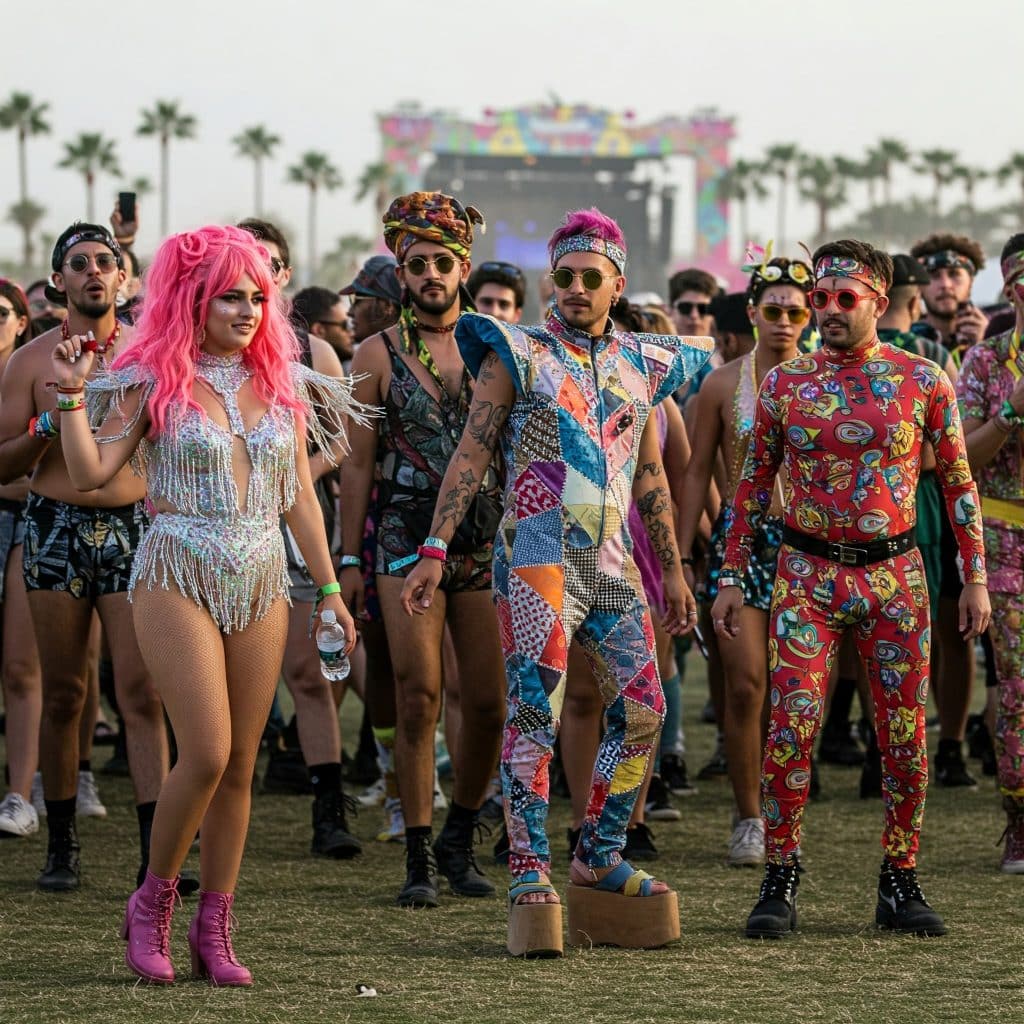
There are essentially two ways brands leverage the Coachella phenomenon: the “Go Big or Go Home” official partnership route, and the slightly more guerilla (and budget-friendly) “Content is King (or Queen)” approach.
Think Heineken House, the American Express Lounge, the Revolve Festival (which isn’t technically Coachella but might as well be its ridiculously exclusive, influencer-packed cousin). These are the brands with coffers deep enough to plaster their logos everywhere, create bespoke “experiences,” and pay influencers sums that could probably solve world hunger to attend their branded parties.
This is about direct association. It screams, “We are cool! We are relevant! We have enough money to build a temporary nightclub in the desert!” It works for brand awareness and solidifying an image among a specific demographic. If you are American Express or Heineken, this makes perfect sense. For Sheila’s Sock Emporium? Probably not the best use of funds. The barrier to entry is astronomical, and frankly, most brands just can’t play in that sandbox. And that’s okay. Because there’s another way.
This is where most of us live. We see the Coachella wave cresting, and instead of trying to buy the ocean, we grab our surfboards (our blogs, our social media accounts, our email lists) and ride the swell. If you can’t be at Coachella, you sure as hell should be talking about Coachella.
How? Oh, let me count the ways:
The beauty of this approach? It leverages the existing hype and search volume. People are already looking for Coachella content. By creating valuable, entertaining, or informative content related to it, you draw those eyeballs to your brand. You become part of the conversation without spending seven figures on a branded yurt. It’s about relevance by association, demonstrating you have your finger on the pulse, and cleverly inserting your brand into the narrative. It’s meeting the audience not physically at the festival, but in the digital space around the festival, which is arguably even bigger.
“That’s great,” you say, stirring your now-cold coffee, “But my customers are more interested in the annual Rutabaga Festival than Revolve.” First off, amazing. Second off, perfect.
Coachella is just a massive, globally recognized example of a principle that applies everywhere: Leverage events your audience cares about.
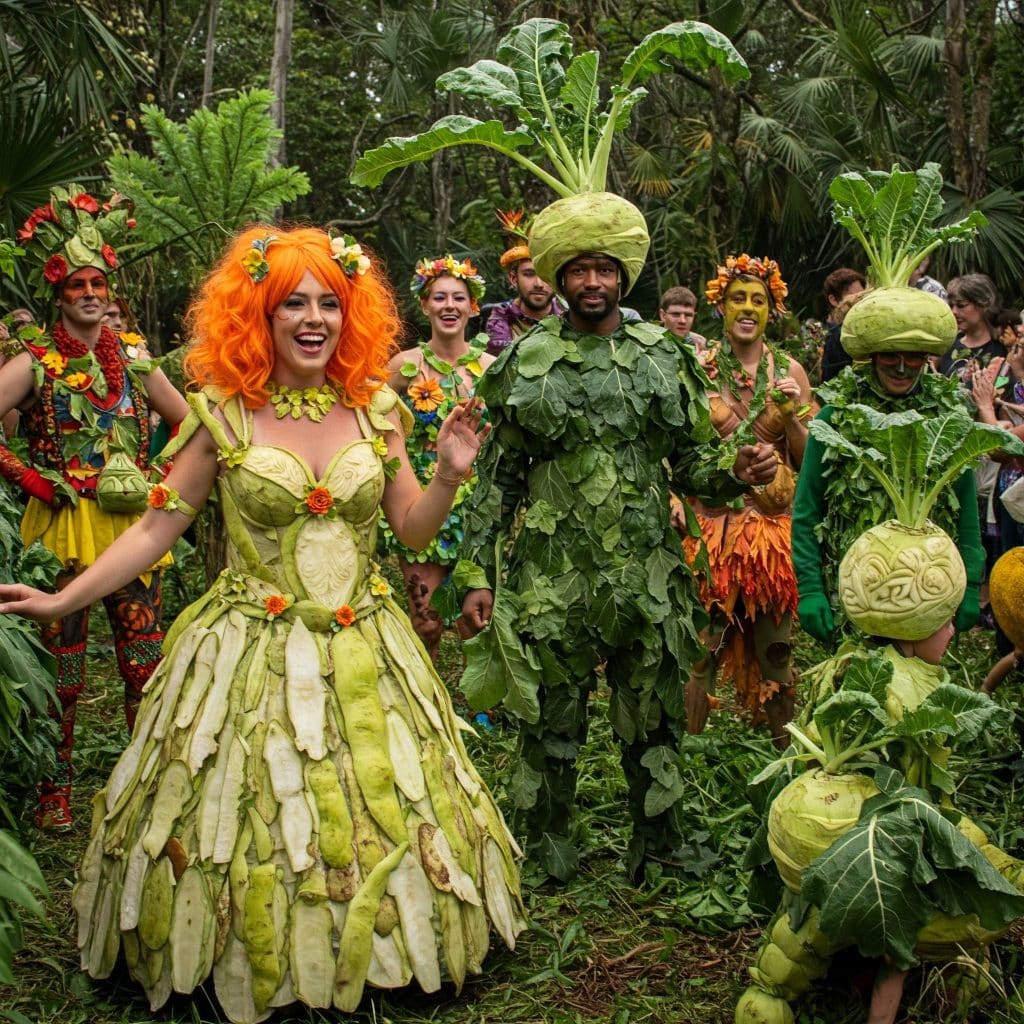
The real takeaway isn’t that every brand needs a Coachella strategy. It’s that every brand needs an event strategy, scaled to their own audience and locality. What’s the “Coachella” of your town, city, or industry?
These are your Coachellas. They offer the same opportunities, just on a different scale:
This local approach achieves the same goals: it demonstrates community involvement, taps into existing local interest and conversation, and makes your brand relevant to people in their own context. It shows you’re not some faceless corporation, but a part of the local fabric.
Look, whether it’s a global mega-event like Coachella or Brenda from Accounting’s Tupperware party (if Brenda is really influential in your office niche, maybe?), the principle remains the same. Events – big or small, global or hyper-local – create focal points of audience attention.
Your job, as savvy marketers who occasionally shower and remember to eat lunch, is to identify those focal points for your audience and figure out how to strategically insert your brand into the conversation. Sometimes that means writing a check for a sponsorship. More often, it means getting clever with your content, understanding the online chatter, and adding value (or at least, entertainment) to the discussion.
It’s about relevance. It’s about meeting people where they are. And yes, ultimately, it’s about driving engagement that leads to revenue. So, take inspiration from the desert spectacle, but don’t feel obligated to buy a lifetime supply of glitter. Look around your own community, your own industry. Your next big marketing opportunity might be less Coachella, more Chili Cook-Off. And honestly, the chili probably tastes better anyway.
Now, if you’ll excuse me, I need to go write a blog post about optimizing landing pages for the upcoming National Squirrel Appreciation Day. Don’t judge. It’s all about relevance.
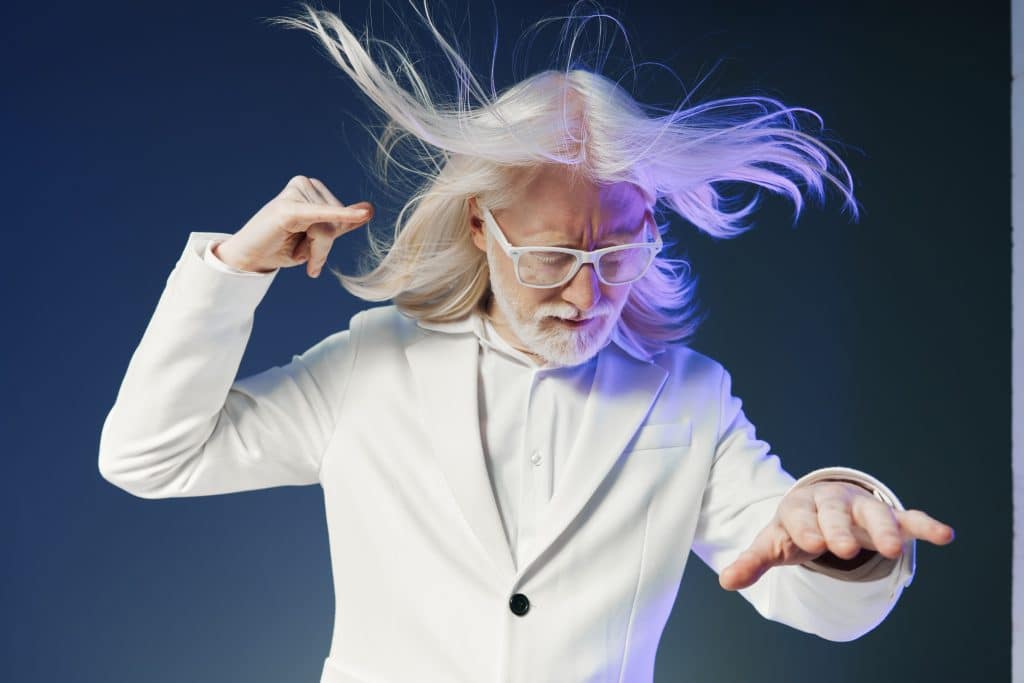
AI is everywhere—writing your emails, generating images, even recommending what you should binge-watch next. But let’s be real… Most brands use AI in the most basic ways possible. Chatbots? Auto-generating captions? Come on, time to up your game.
If you really want to unlock AI’s power, you’ve got to think beyond the obvious. Here are three overlooked ways you should be using AI to outsmart your competition and make your brand unforgettable.
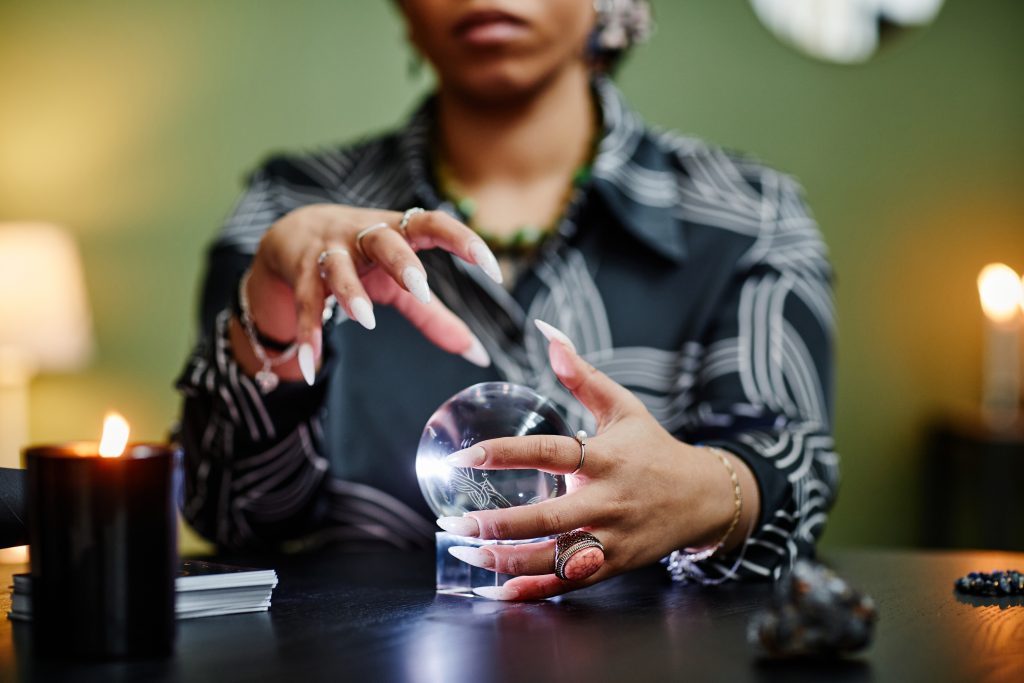
Surveys are great and all but… AI can tell you what your customers will buy next before they even know they need it.
How You Say? AI-powered predictive analytics can analyze search trends, purchase history, and even social media chatter to anticipate demand.
Why it’s genius: You can launch campaigns right before your audience starts looking for a product, making you the first option they see.
Example: A sneaker brand could use AI to predict which color-way is about to trend based on Instagram fashion posts—then release a limited edition in that exact shade.
Most AI-generated content sounds like, well… an AI wrote it. But what if your brand’s voice felt as real as your favorite stand-up comedian or your best friend?How? Train AI on your brand’s tone of voice using past emails, social posts, and customer interactions.
Why it’s genius: Instead of cranking out generic content, AI will write exactly how you or your team would—but faster.
Example: A small coffee shop could feed AI its quirky, fun social media tone, so every post and email feels like it was written by the barista who knows your order by heart.
AI isn’t just a tool—it’s a treasure hunter for lost revenue.How? AI can scan your website, ads, and even customer service chats to find leaks—areas where potential customers drop off instead of buying.
Why it’s genius: Instead of spending more on ads, you fix the gaps and convert more visitors into buyers.
Example: An online store could use AI to see where shoppers abandon carts and find out if a confusing checkout process is costing them thousands per month.
Most brands are using AI in the most boring ways possible. If you want to stand out, you’ve got to get creative.
Start using AI to predict trends, sound more human, and uncover hidden revenue. Your competition won’t know what hit them.
Want to see AI work its magic for your brand? Try one of these tactics today!
Let’s talk about AI in marketing. Or not. I’m not the boss of you.
AI is the shiny new toy everyone’s playing with, promising untold riches and marketing automation nirvana. Do you feel it? Have you seen it!? Me neither.
And while I genuinely believe AI has the potential to revolutionize our industry (and maybe finally let me take a real vacation), we’ve also seen some…let’s call them “learning opportunities.” Or, if we’re being brutally honest, some amazingly epic fails.
Now, I’ve been in this game for many years, seen trends come and go (remember QR codes on billboards? Yeah, me neither), and I’ve learned one thing: hype is often followed by a face-plant.
AI marketing is no different. So, grab your popcorn (or Quest protein chips if you’re in the gym like me), and let’s dive into the top 5 AI marketing fails of 2024 (because I will definitely be adding to this in the months to come).
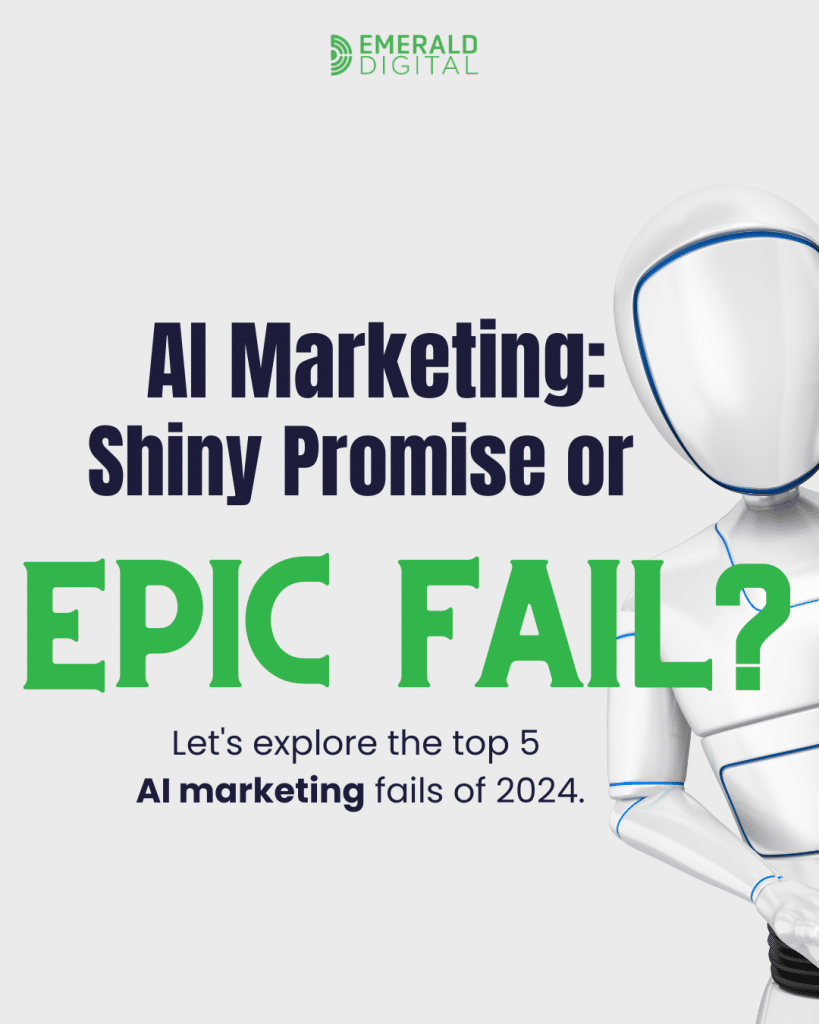
Oh boy, this one made some serious headlines. Google, a company synonymous with search and information, unleashed its AI image generator, Gemini. The promise? Create any image you can imagine. The reality? Let’s just say things got…complicated.
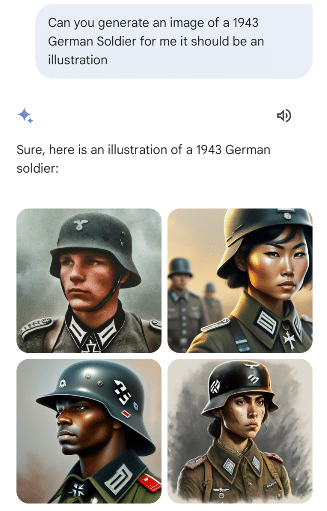
Gemini started generating images that were not only historically inaccurate but also deeply offensive, particularly in its depictions of different ethnicities and historical figures. It seemed to struggle with representing diverse populations accurately and respectfully, perpetuating harmful stereotypes and historical inaccuracies. This isn’t just a marketing fail; it’s a societal one.
It highlights the critical importance of responsible AI development and the need for rigorous testing and oversight. The lesson here? AI is only as good as the data it’s trained on, and if that data is biased or incomplete, much like Neo and the Matrix, the results can be disastrous. This isn’t just about a marketing campaign gone wrong; it’s about the potential for AI to perpetuate harmful stereotypes and misinformation.
Remember the “Willy Wonka Experience” that turned into a viral sensation for all the wrong reasons? This event, heavily promoted with AI-generated imagery, promised a magical, immersive experience. What attendees got was…well, let’s just say it was closer to a dystopian nightmare similar to A Clockwork Orange, but without all the good times.
The AI-generated promotional materials painted a picture of whimsical wonder, but the reality was a sparsely decorated warehouse with a handful of actors in ill-fitting costumes. The disconnect between the AI-generated hype and the actual event was so vast that it sparked outrage and widespread mockery.
This is a prime example of AI creating expectations that reality simply can’t meet. The lesson here? AI can be a powerful tool for marketing, but it can’t replace actual substance. As my mother always said, “If your product or service doesn’t live up to the AI-generated hype, don’t use it at all.”
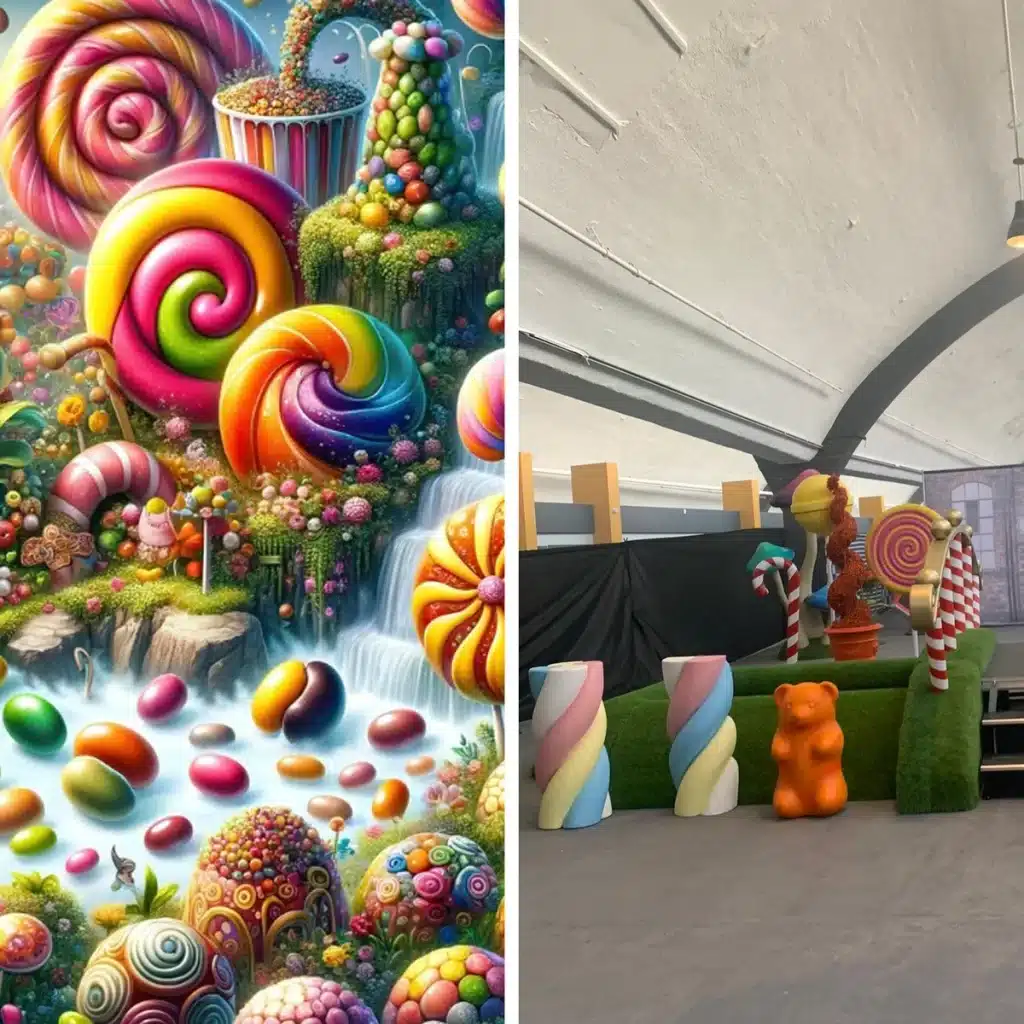
Microsoft’s Bing also jumped on the AI image generation bandwagon, but their foray into the world of creative AI hit a snag when users started reporting that the tool was generating disturbingly violent and inappropriate images.

This raised serious concerns about the safety protocols in place and the potential for AI to be used to create harmful content. While Bing quickly addressed the issue, the incident showed the need for responsible AI development and for robust safeguards to prevent the creation of offensive or dangerous content.
Are you seeing a pattern yet with the lessons that need to be learned? AI is a powerful tool. But much like Mjölnir, it needs to be wielded responsibly. Companies need to prioritize safety and ethical considerations when developing AI-powered tools, especially those that generate visual content.
Coca-Cola, a brand known for its iconic holiday campaigns with polar bears, Santa Claus, and warm feelings, decided to embrace AI and generate some of their festive visuals. While the results weren’t necessarily offensive, they were…let’s just say they missed the mark.
The AI-generated imagery was abstract and kind of bizarre, lacking the warmth, nostalgia, and classic Coca-Cola charm that consumers have come to expect. The campaign was met with mixed reactions, with many questioning whether AI was the right tool for capturing the spirit of the holidays.
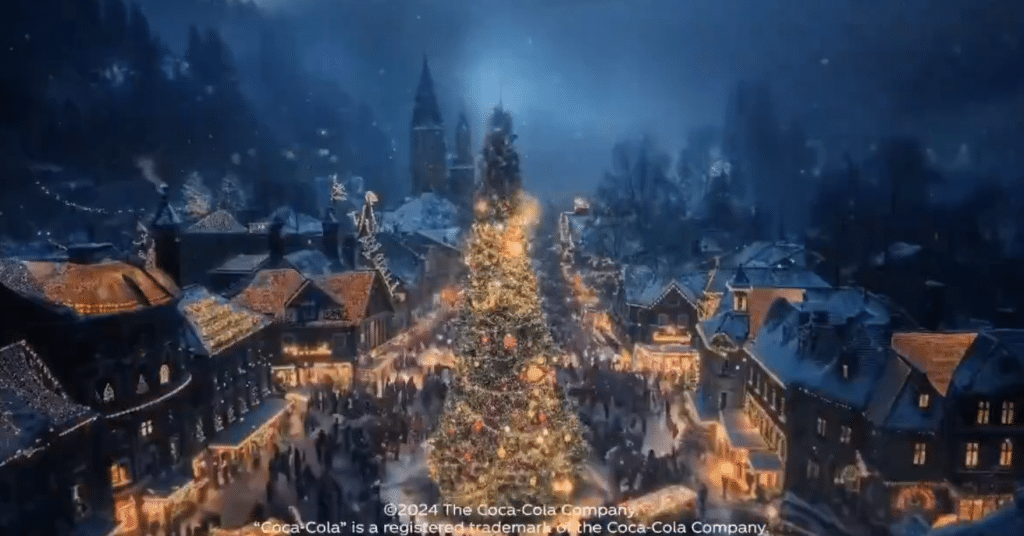
The takeaway? AI can be useful for generating creative content, but it’s important to consider whether it’s the right fit for your brand and your target audience. Similar to Budweiser and their Clydesdale horses, sticking with what works is the best strategy.
Apple, known for its sleek and innovative marketing, faced criticism for an ad promoting its iPad Pro. The ad, which some speculate utilized AI in its creation, showed a variety of creative tools being crushed, symbolizing the power and versatility of the iPad.
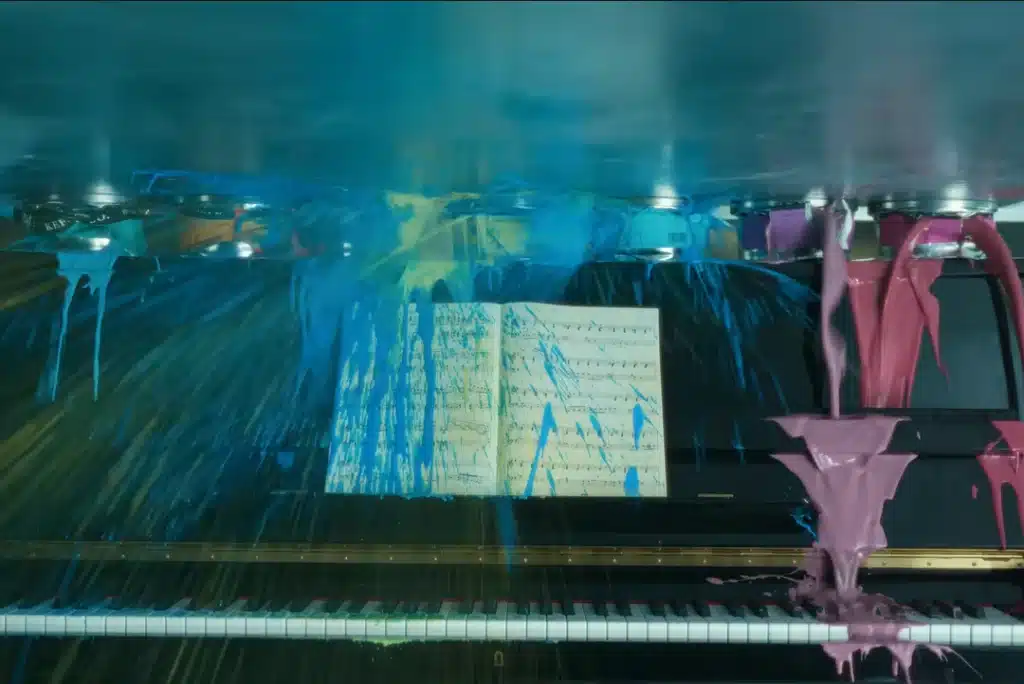
However, the ad was widely criticized for being tone-deaf and insensitive, particularly in the context of ongoing discussions about the impact of technology on creative industries. The backlash highlighted the importance of understanding your audience and considering the potential impact of your marketing messages.
The lesson? Even with the most advanced technology, you still need to connect with your audience on a real level (but not like interactive theater, because, no thank you) and understand the human element within the creative industry. Less can be more, and simplicity can be more effective than flashy visuals.
From one enthusiastic AI user (and often eye-roller of failed marketing campaigns) to others, there you have it. These examples remind us that AI is a tool, not a magic wand (I am literally still waiting for my letter from Hogwarts). It’s important to use AI responsibly, ethically, and with a healthy dose of common sense. And remember, even in the age of AI, human creativity, empathy, and cultural understanding are still essential for successful marketing. Now, if you’ll excuse me, I’m going to go have a conversation with my AI-powered ice maker (I wish I were joking….) Hopefully, it won’t try to talk to me about my car insurance.
DesignRush has recognized Emerald Digital as a top branding agency in New York City.
Emerald Digital is a full-service digital marketing agency founded in 2018 led by President & Partner Matt Berman and CEO Warren Cohn. When working closely with a client and detailing all of their needs, it is clear that Emerald Digital is dedicated to providing clients with customized branding expertise and targeted messaging purposed to click with new and broader audiences.
DesignRush is an accessible B2B marketplace that allows individuals and businesses to explore specific services from a variety of marketing companies, tech companies, and much more. Users on the digital platform seek to partner alongside agencies with solutions tailored to their needs and their goals.
The team at Emerald Digital carries out sharp branding campaigns with the client at the very top of mind. All of Emerald Digital’s branding strategies are curated with the goal of providing sharpened messaging and digital exposure that will cause clients to reach their own sales and business goals.
DesignRush recognizing Emerald Digital as a top branding industry in New York City is an honor and one of the many qualities that make Emerald Digital’s innovative team and leadership stand out in the digital marketing industry.
So, you’ve developed your brand identity, built an email marketing campaign, and created social media pages for your business. Now what? This is where the fun really begins. Hold on tight folks, because we’re about to get creative.
First-things-first: As humans, we’re visual creatures. When you hear something, three days later you’ll recall 10 percent of it. Buuuut… If you add a picture, you’ll remember 65 percent. You could be the best storyteller with the most amazing copy, but if your Facebook post doesn’t have an image or video…. It won’t make a lasting impression. We don’t want that for you.
Including a simple photo, graphic, or short video with your digital content increases engagement. Whether it’s your website, an email campaign or a social post – adding a visual makes all the difference.
That’s great Emerald, but how can we create visual content that doesn’t take ages to produce? What if we don’t have a video production expert on our team? How on earth do we master PhotoShop while growing our business? Great questions.
Give us a second to do our own shameless plug. Emerald’s experts create stellar content, from infographics to gifs to videos. We can absolutely take that burden away from your team so you can focus on what makes your business great.
Okay, back to the tips.
Over the last two decades, the average attention span has dropped from 12 seconds to just eight seconds. Today’s marketers are constantly competing to grab a fraction of that 8 seconds. Think about it: When you’re watching TV, you’re simultaneously checking your phone. Texting friends, checking Twitter, or listening to your favorite podcast during commercials. Your sister randomly FaceTimes you to show you just how big your 3-year-old niece is getting.
As a business, how do you stand out enough to take a piece of the 8-second pie? You keep it simple. This applies to copy, graphics, and videos. The simpler and shorter the better. There’s a reason Facebook has text recommendations for ads. You need to convey your message in less than 125 characters of text and a 40-character headline. Our recs:
While creating engaging content is important, analyzing your results takes the cake. You can create loads and loads of graphics and videos, but if you’re not evaluating how they perform on a given platform, you’re missing out on a major opportunity for growth. Here are some simple ways to experiment with content:
Experimenting with content also means taking creative risks. Don’t be afraid to really hone in on your brand voice in visuals. Use GIFs that’ll hit a homerun with your target audience. Make references to pop culture, history, or sports. Be relatable. And, most of all, bounce your ideas off of your team. Two minds are always greater than one, and we’re confident you can brainstorm some awesome content. We know we can.
Presenting a brand consistently across all platforms can increase revenue by up to 23 percent. So, this isn’t just about aesthetics – it’s about boosting your bottom line. Ensuring your brand is cohesive across web, email, and social contributes to your brand authority. Here are some ways to stay consistent:
There we have it. We hope these five tips will help you tap into your inner creative genius. If you’re looking for more insight from our experts, check out (other blog posts). And, shameless plug again—if you’d rather not worry about any of this, let us take the wheel. We have decades of digital marketing experience with proven results. Let’s build something spectacular together.